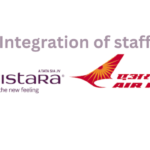With almost 40 per cent of employees being forced to work remotely the world over, a significant 75 per cent of the employees admitted that their productivity on individual tasks spiked in the initial months of the pandemic. An international Boston Consulting Group (BCG) survey covering India, Germany and the US, has revealed that employees and managers are surprisingly open to flexible ways of working. Also, employees have been highly productive in terms of analysing data, preparing presentations, and even executing administrative tasks, where they have to work individually.
However, the figures were not that encouraging when it came to employees’ productivity in case of collaborative tasks, where they had to work in teams, interact with clients and co-workers.
Social connectivity and flexibility: About 51 per cent of those surveyed said they were able to maintain or improve their productivity, when it came to collaborative tasks. These findings were common across geographies and applied to those working from home and those working onsite. Therefore, going forward, companies who wish to opt for the hybrid virtual/onsite mode of working for the longer term will have to focus on encouraging virtual social connectivity amongst employees/co-workers.
Productivity depends on social connectivity. Only those who were satisfied with how they were socially connected to their co-workers were able to improve their productivity in terms of collaborative projects. Many employees also missed the physical interaction with co-workers at the workplace. About 60 per cent of the employees surveyed wished for more flexibility in terms of workplace and work timings. In the future, employers will have think of ways to increase productivity, by maintaining social connectivity amongst employees, irrespective of the location they work from.
In India, 58 per cent were satisfied with the social connectivity, while in the US 63 per cent were satisfied. In Germany, only 50 per cent were satisfied.
About eight per cent seek some flexibility in terms of where they work, while 12 per cent seek some flexibility in when they work. About 40 per cent would be happy with some flexibility in terms of location and time, both. These figures indicate that only a hybrid model of work will work for most organisations.
Employee health: Those who enjoyed better mental health before the pandemic were more productive in terms of collaborative tasks than those who were mentally unhealthy before the lockdown. Similarly, those who experienced better physical health during the pandemic than before are more likely to have improved their productivity in terms of collaborative tasks than employees who were no as healthy physically.
Therefore, it is critical for employers to recognise the connection between mental and physical health and productivity.
Remote-working tools: Employees who were satisified with videoconferencing, virtual white boards, project management software and other remote-working tools reported better productivity in collaborative tasks. Those who were dissatisfied with these tools were naturally not as productive. Therefore, it is important for employees to experience the same connectivity at home as in the office and have the same work setup as in the office to witness higher productivity. It is up to the employers to ensure that the transition from onsite to remote working or vice versa is smooth and seamless so that productivity remains unaffected or improves.
The BCG employee sentiment survey covered over 12,000 professionals employed before and during COVID-19 in the US, Germany, and India. Those surveyed included engineers, analysts, healthcare workers, HR professionals and teachers.
Value our content... contribute towards our growth. Even a small contribution a month would be of great help for us.
Since eight years, we have been serving the industry through daily news and stories. Our content is free for all and we plan to keep it that way.
Support HRKatha. Pay Here (All it takes is a minute)




































